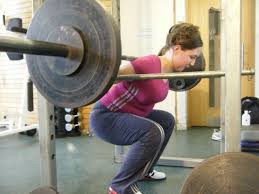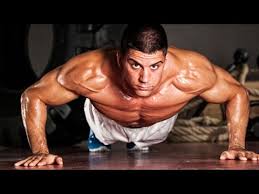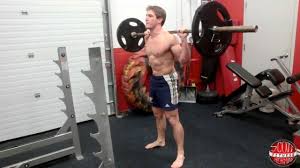Offseason strength training; early season drilling
One of the best things that swimmers can do for themselves in the off-season is building their strength. There are plenty of exercises that can help build lean muscle. This can help swimmers can get more power off of the blocks, length off of the turn, and speed out of each stroke. Since swimming uses all of the major muscle groups the suggested strength training exercises can be done in gyms.
Warm Up and Get Organized
Prior to doing any type of strength training, it is always a good idea to warm up the body. This can be as easy as riding a stationary bike. It is best to get at least 20 minutes of cardio warm-up in before you start lifting weights. It is also important not to overdo anything so you do not overwork your muscles. You are prepping for swimming, not bodybuilding. Many swimmers will use a notebook to keep track of their workouts in the weight room. They do this so they can be sure to use appropriate weights and recognise their gains.
Large Muscle Exercises
There are several exercises that are good for swimmers’ bodies. For the legs, some of the best choices include squats, leg presses, extensions, and curls. To get at the lats and other back muscles, rowing exercises like a seated row and the bent row,  as well as the basic lat pull down and raise work well. As always, abdominal work with and without weights is always beneficial. It is especially good when you get into the lower abs and obliques. For the arms, shoulder and bench presses are helpful and the classic dumbbell curl is a good choice.
as well as the basic lat pull down and raise work well. As always, abdominal work with and without weights is always beneficial. It is especially good when you get into the lower abs and obliques. For the arms, shoulder and bench presses are helpful and the classic dumbbell curl is a good choice.
Work Out at Home
On those days when you cannot get to the gym,  there are several exercises that you can do for strength training at home. Dumbbell curls can always be done with soup cans or other weighted items. Abdominal work can always be done at home and so can any type of push up. You can also do any type of stretch as well as yoga work. There are plenty of yoga videos available for free online.
there are several exercises that you can do for strength training at home. Dumbbell curls can always be done with soup cans or other weighted items. Abdominal work can always be done at home and so can any type of push up. You can also do any type of stretch as well as yoga work. There are plenty of yoga videos available for free online.
Get Back into the Pool
As soon as the early season drills get going, it is a good idea to get back into the pool and leave the weights behind for a while. When you start swimming, it is a good idea to focus on the technique. Since you have been building strength in the gym, you might notice some subtle differences in your stroke. Many swimmers in the early season will use paddles to keep building strength. It is always recommended to start with a warm-up. This a definite must before you start doing any type of strength training in the pool.
Warm Ups and Start Swimming
 Start with stretches on the pool deck and, if you have a stationary bike nearby, take and 10 to 20-minute ride. Then, get in the pool and swim a few laps in freestyle. You should do this until your body begins to feel like it is ready to start working harder. Since it is early in the season, it is helpful to take your time in the warm-up and not push it too hard.
Start with stretches on the pool deck and, if you have a stationary bike nearby, take and 10 to 20-minute ride. Then, get in the pool and swim a few laps in freestyle. You should do this until your body begins to feel like it is ready to start working harder. Since it is early in the season, it is helpful to take your time in the warm-up and not push it too hard.
When you first start to swim with paddles, you might enjoy adding fins to the drills. By taking the hard work of the legs out of the situation, you can really focus on the arms. The use of paddles will help your upper body build strength. Then, to give the legs a good workout, ditch the fins and the paddles. Get a kickboard out and start kicking. Of course, it is important to mindfully kick, noticing how your legs, core, and glutes are working as you move through the water.
Take Your Time in the Pool
Those early season drills should work on getting your strokes under control and getting your body stretched out. In the earliest part of the season, take your time getting back to your full speed in the pool. Especially after spending the off-season out of the water.
